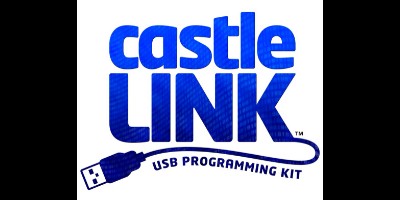The Castle Mamba Monster X 8S Electronic Speed Controller (ESC) is a powerhouse designed for 1/6th scale RC vehicles weighing up to 25lbs and running on up to 8S LiPo batteries. Known for its ruggedness and advanced features, this ESC allows you to push your RC car or truck to its limits. However, to truly unleash the potential of your Mamba Monster X 8S, understanding how to program it is crucial. Proper programming ensures optimal performance, extends battery life, and allows you to tailor the ESC’s behavior to your specific driving style and terrain.
This comprehensive guide will walk you through everything you need to know about programming your Castle Mamba Monster X 8S ESC. We will cover the essential steps, from understanding the components and software to advanced tuning options, enabling you to confidently configure your ESC for any adventure, whether it’s bashing, crawling, or track racing.
Understanding Your Mamba Monster X 8S ESC: Key to Programming
Before diving into the programming process, it’s important to understand what makes the Mamba Monster X 8S tick. This ESC isn’t just about raw power; it’s packed with intelligent technology designed to enhance your RC experience.
Key Features and Innovative Technologies
- CRYO-DRIVE™ Technology: This groundbreaking software minimizes heat generation by intelligently managing the ESC’s components. By reducing heat, CRYO-DRIVE™ allows for longer run times, higher gear ratios, and improved performance, especially during partial throttle operation, which is common in most RC driving scenarios.
- SmartSense™ Mode: When paired with a Castle 4-POLE 12-SLOT Sensored Motor, SmartSense™ uses motor sensors for smooth starts, exceptional torque, and precise low-speed control. It seamlessly transitions to Castle’s efficient sensorless mode at higher speeds, optimizing power delivery and reducing heat.
- Auxiliary Wire Functionality: The Mamba Monster X 8S offers on-the-fly adjustability via an auxiliary wire. By connecting this wire to an open channel on your receiver and programming it through Castle Link, you can fine-tune settings like torque control, max brake, or drag brake directly from your transmitter while driving.
- Data Logging: This built-in feature records crucial performance data such as motor RPM, battery voltage and current, ESC and motor temperature, and throttle input. Analyzing this data via Castle Link helps you optimize your setup for maximum efficiency and performance.
- Waterproof Design: Encased in a robust CNC aluminum housing and potted in waterproof epoxy, the Mamba Monster X 8S is built for all-weather conditions. This design not only protects the electronics but also aids in heat dissipation.
- Adjustable BEC: The powerful integrated 8A peak BEC (Battery Eliminator Circuit) is adjustable from 5.25V to 8.0V, allowing you to power high-voltage servos and other accessories.
- Telemetry Compatibility: For users with Futaba T4PX or T7PX transmitters, the Mamba Monster X 8S supports telemetry, providing real-time data feedback on ESC temperature, voltage, and RPM.
.png)
.png)
Technical Specifications Overview
To effectively program your ESC, understanding its key specifications is essential:
| Feature | Specification |
|---|---|
| Application Guidelines | 1:6th Scale vehicles up to 25 lbs |
| Input Voltage Range | 2S-8S LiPo (MIN: 2S, MAX: 8S LiPo 33.6V) |
| Running Modes | Sensored, Sensorless, SmartSense™ |
| BEC | Adjustable 5.25V-8.0V / 8A Peak |
| Size | 69.5mm x 54.1mm x 49mm |
| Weight | 163 grams (with wires) |
| Connectors | 6.5mm female bullets (motor) |
| Programmability | Castle Link USB, B-Link Bluetooth Adapter, Transmitter |
| Telemetry | S.BUS2 Telemetry Link compatible |
| Waterproof | Yes |







Getting Started with Programming Your ESC
Programming your Mamba Monster X 8S ESC allows you to customize its settings to match your vehicle, motor, battery, and driving preferences. There are three primary methods for programming:
- Castle Link USB Programming Suite: This is the most comprehensive method, offering access to all programmable parameters via your Windows PC. A coupon for a free Castle Link USB adapter is included with the ESC.
- B-Link™ Bluetooth™ Adapter: For wireless programming, the B-Link adapter (sold separately) pairs with the Castle Link app on your Android or iOS smartphone or tablet.
- Transmitter Programming: Basic settings adjustments can be made directly through your transmitter, offering quick changes in the field.
Required Tools for Programming
-
For Castle Link USB Programming:
- Windows PC
- Castle Link USB Adapter
- Castle Link Software (free download from Castle Creations website)
- USB Cable
-
For B-Link Bluetooth Programming:
- B-Link Bluetooth Adapter
- Android or iOS Smartphone or Tablet
- Castle Link Mobile App (free download from App Store or Google Play)
-
For Transmitter Programming:
- Your RC Transmitter (compatible with your ESC and receiver)
- ESC Quick Start Guide (for manual programming steps)
Installing Castle Link Software and Connecting
For Castle Link USB Programming:
- Download and Install Software: Go to the Castle Creations website and download the latest Castle Link Programming Suite software to your Windows PC. Follow the installation instructions.
- Connect the Adapter: Plug the Castle Link USB adapter into a USB port on your computer.
- Connect to ESC: Disconnect the battery from your ESC. Locate the receiver wire coming from the ESC. Unplug it from your receiver. Connect the Castle Link adapter to the receiver wire of the ESC, ensuring correct polarity (Orange/Signal to ‘?’, Red/Positive to ‘+’, Brown/Negative to ‘-‘). You may need to power the ESC with a battery pack (2S LiPo or higher) if the red wire to the receiver is disconnected. Connect the battery pack to the ESC.
- Launch Castle Link Software: Open the Castle Link software on your computer. The software should detect the connected ESC. A green USB connection status in the lower left corner of the software indicates a successful connection.
For B-Link Bluetooth Programming:
- Install Castle Link App: Download and install the free Castle Link Mobile App from the Apple App Store or Google Play Store on your smartphone or tablet.
- Connect B-Link Adapter: Plug the B-Link Bluetooth Adapter into the receiver wire of your Mamba Monster X 8S ESC, similar to the Castle Link USB adapter.
- Power On ESC: Connect the battery pack to your ESC.
- Pair with App: Enable Bluetooth on your mobile device and open the Castle Link app. Follow the app’s instructions to pair with the B-Link adapter. The app should recognize your ESC wirelessly.
Step-by-Step Programming Guide
Once you have connected to your ESC using either Castle Link USB or B-Link, you are ready to start programming. The Castle Link interface is user-friendly and provides access to a wide array of adjustable settings.
Calibration Process (Transmitter Calibration)
Before making any other programming changes, calibrating your ESC to your transmitter is crucial. This process teaches the ESC to recognize the signals from your transmitter for neutral, full throttle, and full brake/reverse.
- Turn on your Transmitter: Ensure your transmitter is powered on.
- Start Calibration Mode: With the ESC and receiver powered off, hold full throttle on your transmitter. While holding full throttle, turn on the ESC.
- Listen for Beeps: The ESC will emit a series of beeps indicating it has entered calibration mode. You may hear tones for cell count and then calibration tones.
- Neutral Position: Release the throttle to the neutral position. The ESC will beep again to confirm neutral.
- Full Brake/Reverse Position: Push your transmitter trigger to full brake/reverse. The ESC will beep to confirm full brake/reverse.
- Calibration Complete: The ESC will play an arming tone, indicating calibration is complete.
Note: If you are using a Spektrum AR6100AT receiver, you may need to power on the ESC at neutral throttle first, wait for the receiver LED to turn solid amber, and then apply full throttle before the ESC arms, as described in the FAQ section of the original article.
Basic Settings Adjustments
Using Castle Link software or the app, you can adjust a range of basic settings to fine-tune your ESC’s performance:
-
Throttle:
- Throttle Response: Adjusts how quickly the ESC responds to throttle input. Softer settings are good for crawling, while more aggressive settings suit bashing and racing.
- Reverse Type: Choose between “Forward/Brake Only,” “Forward/Reverse,” or “Forward/Reverse Delay.”
- Motor Type: Select “Brushless” for brushless motors.
- Motor Direction: Reverse motor direction if your vehicle goes backward when you expect it to go forward.
-
Braking:
- Brake Strength: Controls the maximum braking power. Adjust to suit your driving style and the surface you are driving on.
- Drag Brake: Applies automatic braking force when the throttle is at neutral. Useful for crawling and preventing rollaways on slopes.
-
Cutoff Voltage:
- Auto LiPo Volts/Cell: Sets the voltage per cell at which the ESC will cut power to protect your LiPo battery from over-discharge. The default is 3.2V/cell. Consult your battery manufacturer’s recommendations for the optimal cutoff voltage. You can adjust this from 3.0V to 3.5V per cell.
Advanced Settings for Optimized Performance
For more experienced users, Castle Link provides access to advanced settings to further customize the Mamba Monster X 8S:
-
BEC Settings:
- BEC Voltage: Adjust the BEC output voltage (default 5.5V) to match your servo and accessory requirements. Options are 5.5V, 6.0V, 7.5V, and 8.0V. Higher voltage can provide more power to servos but ensure your servos and receiver are rated for the selected voltage.
-
Auxiliary Wire Function:
- Auxiliary Wire Mode: Assign a function to the auxiliary wire for on-the-fly adjustments from your transmitter. Select from options like “Max Throttle Adjustment,” “Max Brake Adjustment,” “Drag Brake Adjustment,” “Torque Control Adjustment,” and more. Once configured, you can use an auxiliary channel and dial/switch on your transmitter to adjust the selected parameter while driving.
-
Torque Control:
- Torque Control: Limits the motor’s torque output, useful for improving traction on loose surfaces or for smoother starts in crawling applications.
-
Data Logging Settings:
- Sample Frequency: Adjust the frequency at which data is logged. Higher frequency provides more detailed data but fills the log faster. You can also disable data logging if not needed.
- Automatic Data Reset: Configure the ESC to automatically reset the data log on startup.
- Clear Logged Data: Manually clear the data log within the Castle Link software or app.
Utilizing the Auxiliary Wire for On-the-Fly Adjustments
The auxiliary wire is a powerful feature for real-time tuning. To use it:
- Connect Auxiliary Wire: Connect the white auxiliary wire from the ESC to an open auxiliary channel on your receiver.
- Assign Function in Castle Link: In Castle Link, under the “Advanced” tab, choose an “Auxiliary Wire Mode” from the dropdown menu. Select the parameter you want to adjust on-the-fly (e.g., “Torque Control Adjustment”).
- Configure Transmitter: Set up an auxiliary channel and a knob or switch on your transmitter to control the chosen function. Refer to your transmitter’s manual for instructions on assigning channels and controls.
- Real-time Tuning: Now, while driving, you can use the assigned knob or switch on your transmitter to adjust the selected parameter in real-time and observe the immediate effect on your vehicle’s performance.
Data Logging and Analysis for Performance Tuning
The Mamba Monster X 8S’s data logging feature provides valuable insights into your vehicle’s performance. To use it effectively:
- Run Your Vehicle: Drive your RC vehicle as you normally would. The ESC will automatically log data during the run.
- Download Data Log: Connect your ESC to Castle Link software or the app. Go to the “Data Logging” tab. Click “Download Logged Data.”
- Analyze Data: Review the graphs and data points to analyze parameters like motor RPM, temperature, voltage, and throttle input. Identify areas for improvement, such as optimizing gearing, battery selection, or ESC settings. For instance, if you see high ESC or motor temperatures, you might need to reduce gearing, improve cooling, or adjust throttle settings.
.png)
Troubleshooting Common Programming Issues
Encountering issues during programming is not uncommon. Here are solutions to some typical problems based on the original article’s FAQ:
-
ESC Not Calibrating to Transmitter:
- Check Throttle Endpoints/Travel: Ensure your throttle and brake/reverse endpoints (EPA, ATV, Travel) on your transmitter are set to 100-120%.
- Throttle Trim/Sub-Trim: Adjust throttle trim to ensure the neutral position is correctly recognized.
- Transmitter Type: For Futaba transmitters, try reversing the throttle channel.
- Spektrum Receivers: If using a Spektrum AR6100AT, follow the specific calibration procedure mentioned earlier, powering on at neutral first.
-
ESC Not Connecting to Castle Link:
- USB Connection Status: Verify a green USB connection status in the Castle Link software. If not, refer to the Castle Link FAQ on the Castle Creations support site for driver software troubleshooting.
- ESC Connection to Adapter: Double-check the wiring connection between the Castle Link adapter and the ESC receiver wire, ensuring correct polarity.
- Power Supply: If the red wire to the receiver is disconnected, ensure a battery pack (2S or higher) is connected to power the ESC when connecting to Castle Link. Connect the ESC to the adapter before connecting the battery.
-
Motor Runs Backward After Calibration:
- Swap Motor Wires: For sensorless motors, swap any two of the three motor wires connected to the ESC.
- Motor Direction Setting: For sensored motors, use Castle Link to change the “Motor Direction” setting.
-
Flashing LEDs and Error Codes:
- Calibration Needed: Flashing green or red LEDs at neutral indicate the ESC is not calibrated.
- Data Logger Full: Solid yellow LED indicates the data logger is full. Clear the data log using Castle Link or by holding full reverse on startup.
- Error Codes: Flashing yellow LED with occasional red and beeps indicates an error code. Refer to the ESC Quick Start Guide for error code interpretations and troubleshooting.
-
No Steering or Throttle:
- Receiver Connection: Ensure the ESC is plugged into channel 2 (throttle) on the receiver with the correct orientation.
- Receiver Power: Check if your receiver is getting power and signal from the transmitter.
- Battery Connections: Double-check solder connections on your battery plug.
For more detailed troubleshooting and FAQs, always refer to the Castle Creations support website and the resources provided with your Mamba Monster X 8S ESC.
Conclusion: Mastering Your Mamba Monster X 8S Programming
Programming your Castle Mamba Monster X 8S ESC is essential to unlocking its full potential and tailoring its performance to your specific RC vehicle and driving style. By understanding the ESC’s features, utilizing the Castle Link software or app, and following the calibration and programming steps outlined in this guide, you can optimize your RC experience.
Whether you are looking for smoother low-speed control for technical crawling, aggressive throttle response for high-speed bashing, or fine-tuned braking for precise cornering on the track, the Mamba Monster X 8S offers the programmability to achieve your goals. Experiment with different settings, analyze data logs, and take advantage of the on-the-fly adjustments with the auxiliary wire to truly master your ESC and dominate any terrain.
For further support, detailed guides, and the latest software updates, visit the Castle Creations support site. Enjoy the power and programmability of your Mamba Monster X 8S ESC!
Resources:
- Drivers Ed Guide
- Quick Start Guide
- Motor Quick Start
- SMARTSENSE™ Technology
- Audible Alert Reference Chart
- Frequently Asked Questions
- ESC Calibration
- Transmitter Programming
- Castle Data Logging